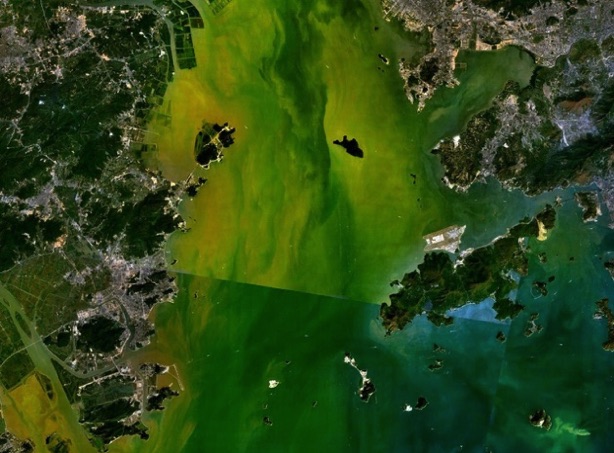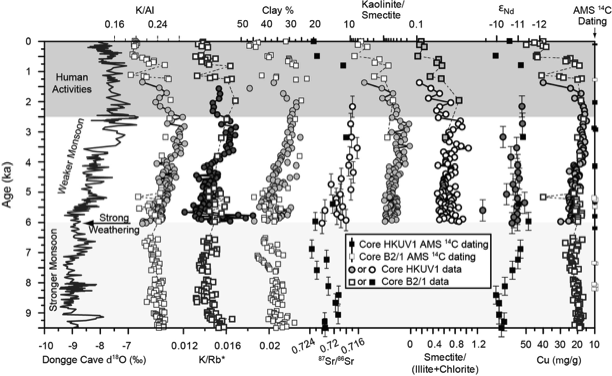Anthropogenic Impacts on Environment
By reconstructing how erosion and weathering have changed in continental drainage basins in the recent geological past it is possible to understand what effect naturally induced climate changes have had on the discharge from River systems and potentially to use the marine stratigraphic record to reconstruct how environments have evolved over a number of timescales. Ideally I hope to do this on time scales of tens of millions of years in order to reconstruct how the long-term evolution of the Asian monsoon has co-evolved with the growth of the Tibetan plateau and the building of the Greater Himalayas.
By establishing how river basins respond to natural climate cycles during the Quaternary we can establish a baseline against which to understand the impacts that human society has had on landscape. Recent studies have shown that the delta of the Congo basin changed sharply about 3000 years ago in response to human settlement and now we extend this by studying the Pearl River in southern China

Satellite image of the Pearl River estuary between Hong Kong and Macau in southern China. Study of cores taken from north of Lantau Island now reveal that the composition of the river changed sharply off around 2500 years ago coinciding with the settlement of southern China and the establishment of widespread agriculture.

Data collected from Core HKUV1 and B2-1 in the Pearl River estuary (Hu et al., submitted) showing how the intensity of chemical weathering can be measured using a series of geochemical ratios and clay mineral compositions. These compositions change to showing less chemical weathering as the monsoon weakens from 6 to 3 ka, after experiencing a maximum in the early part of the Holocene. This response is unlikely to reflect an immediate impact on environment from the changing climate but rather the enhanced reworking of older soils into the Pearl River during periods of strong monsoon. since 2500 years ago the weathering proxy show a sharp increase in the degree of alteration of the sediment reaching the ocean despite the fact that the summer monsoon only shows moderate increases in intensity. We suggest that this development reflects reworking of older weathered soils into the river as a result of increasing agriculture and that this correlates with the increase in anthropogenic pollutants such as copper and zinc as measured by Zong et al. (2010). This project was supported by funding from the Swire educational trust to my student Dengke Hu.
Related Papers
Hu, D., Clift, P.D., Böning, P., Hannigan, R., Hillier, S., Blusztajn, J., Wang, S., Fuller, D.Q., 2013. Holocene evolution in weathering and erosion patterns in the Pearl River delta. Geochemistry Geophysics Geosystems, 14. doi:10.1002/ggge.20166